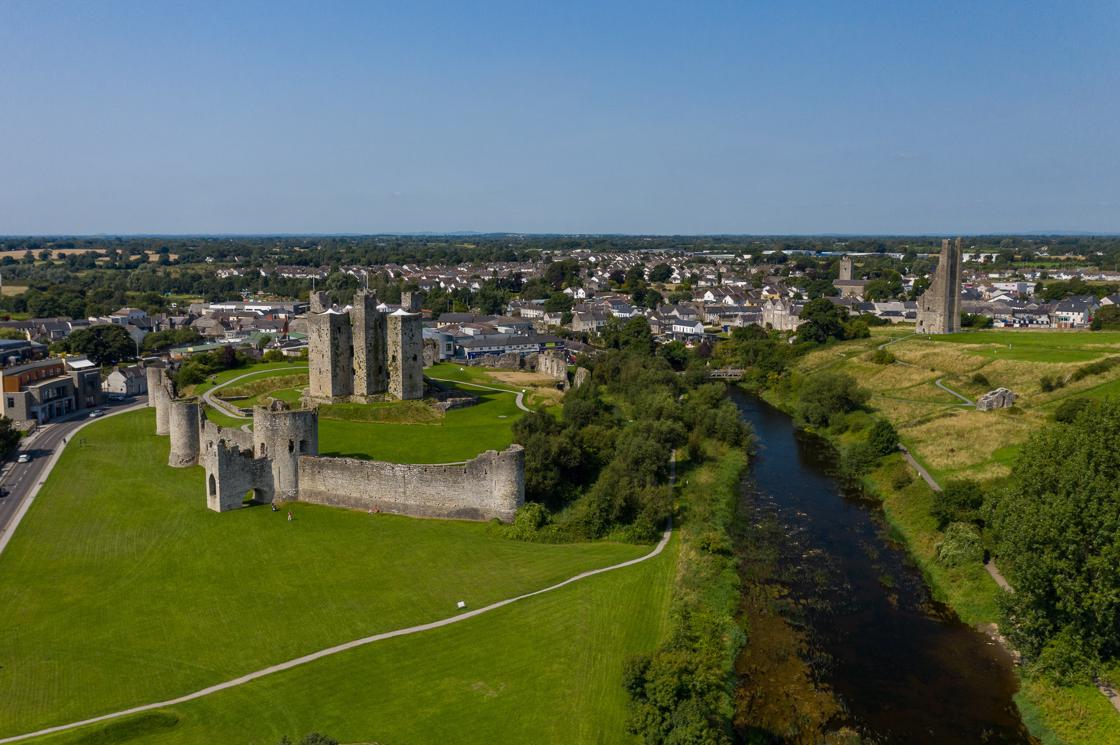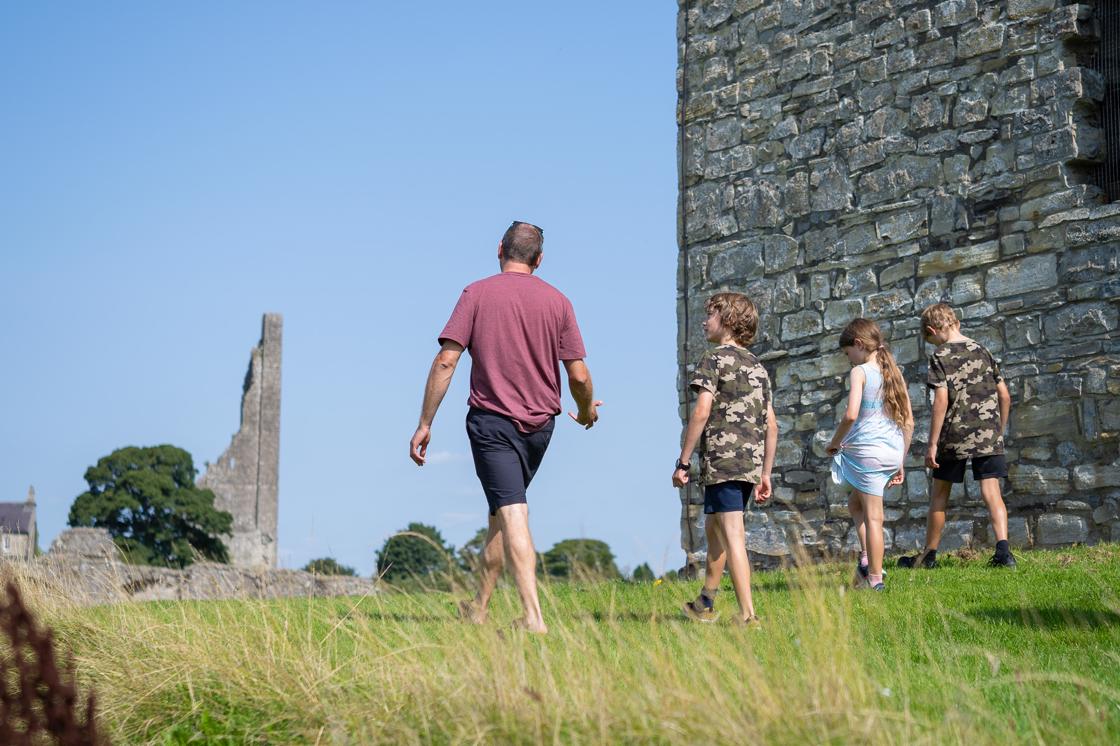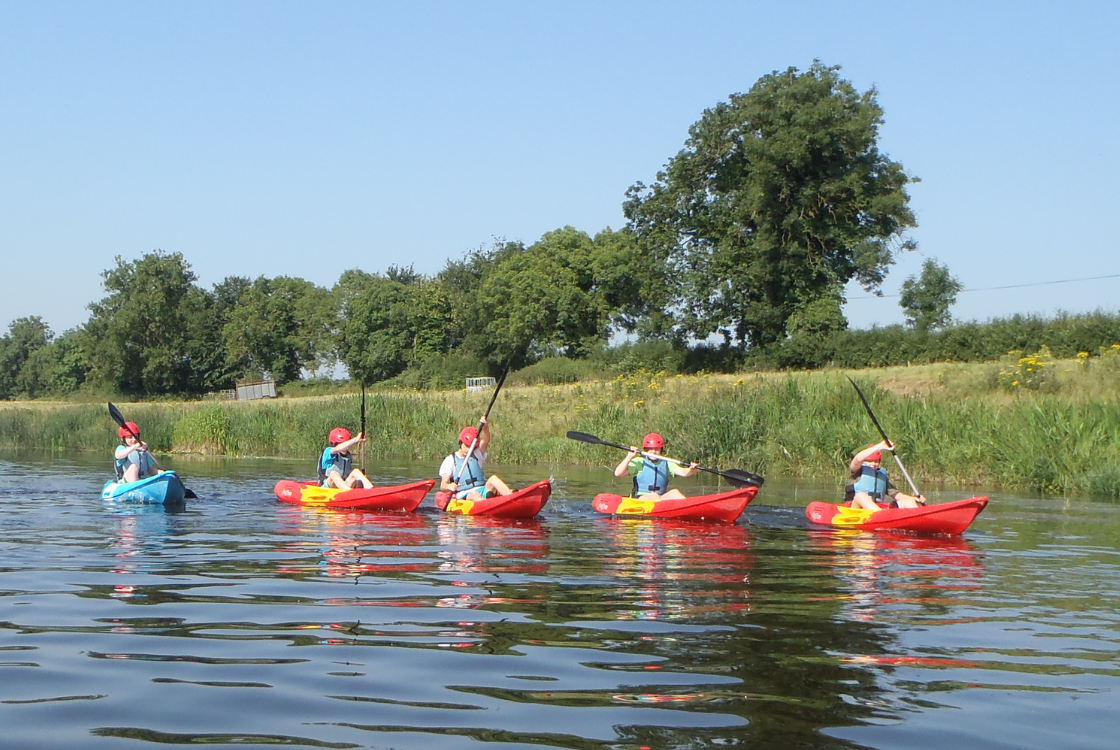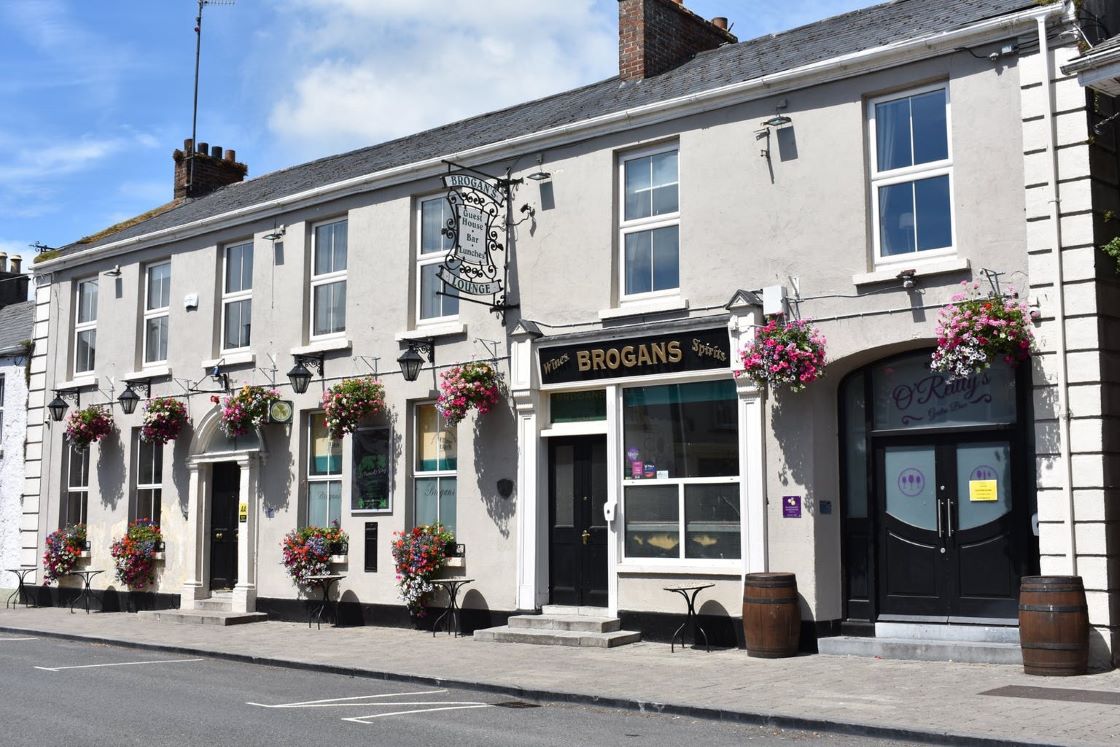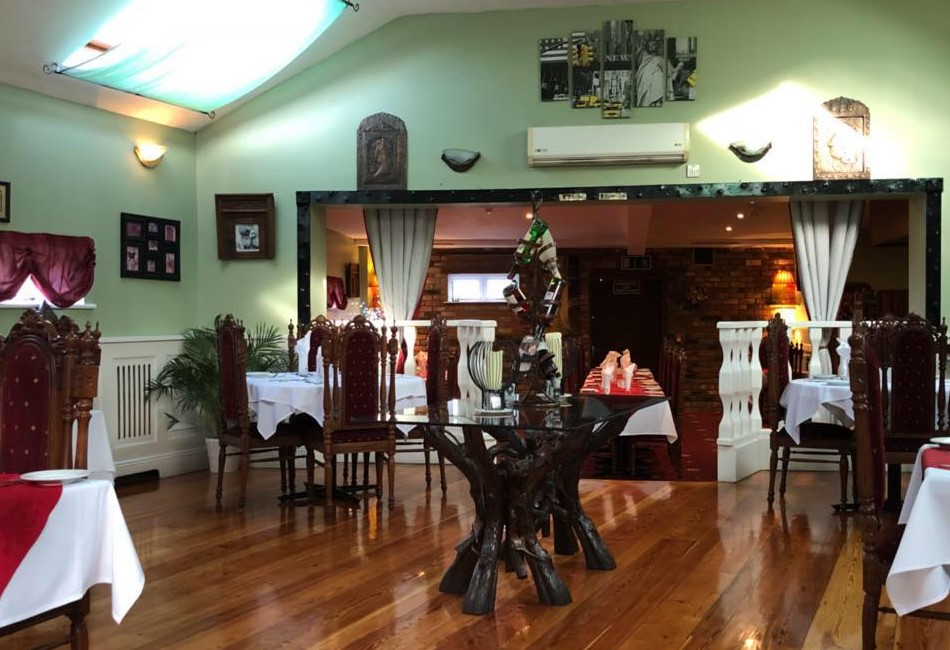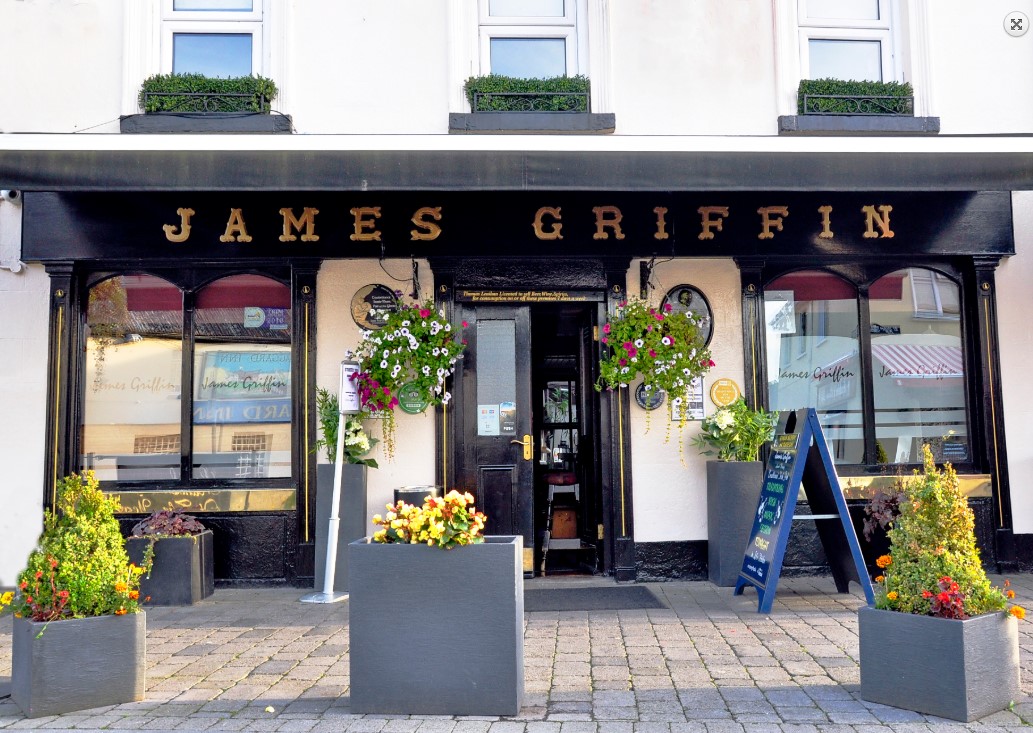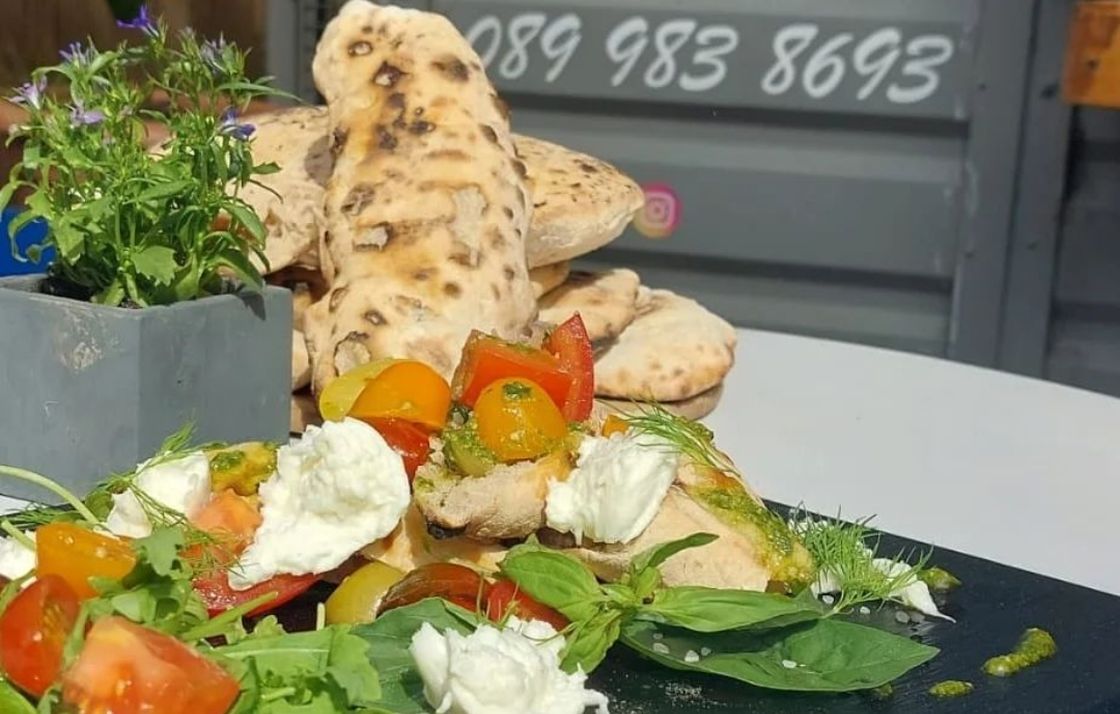This fantastic town trail breathes life into the historical significance of Trim. Start at the Visitor Centre and follow the historical signs to learn about Trim and its history. Weaving around the streets of the medieval town you will see the mighty Trim Castle, on of the old town gates, nuymerous ruined abbeys and one of the tallest medieval towers in Ireland.
Parking: Trim Town Centre has pay and display parking 9.00-18.00 Monday to Saturday with an hourly rate of €1.00.
Special offer: all-day parking for €3.00 available in Emmet Street Car Park, Trim, 3 minutes walk from Trim Castle Entrance. See Map to Emmet Street Car Park.
Download your free Trim Heritage Trail Map
Download your free Trim Heritage Town brochure including full details of each stop on the trail
The walk takes approximately 60 minutes and profiles the following points:
1: Trim Visitor Centre

Former market house, built c.1850 and also used as a town hall. In September 1920 the town hall was burned during the Irish War of Independence. The current Art Deco building beside Trim Castle houses the Trim Visitor Centre. This tourist office also houses the Trim Medieval Armoury, a gift shop and coffee station.
2: Trim Castle
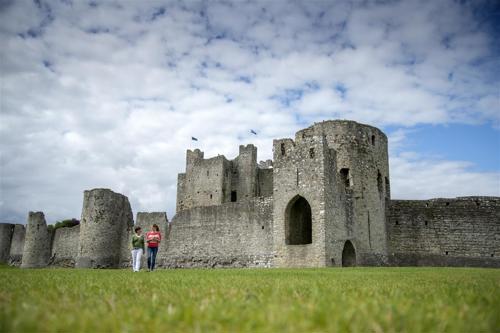
Built by Hugh de Lacy in 1175/76, this is the largest Anglo-Norman castle in Ireland. De Lacy had built a wooden castle prior to this, but it had been burned during a raid by the Irish. In medieval times, the castle stood as an imposing stone sentinel and a powerful symbol of English power and conquest in Ireland. The castle remains a focal point for the town and was used in the film Braveheart with Mel Gibson, where it doubled for a number of Scottish and English castles. For opening times and more information, click here.
3: Dublin Gate
One of the five access gates in the defensive wall that surrounded the town of Trim, this site marks where the southern-most gate known as the Dublin Gate was located. Taxes were also collected at the gates on goods being brought to the town's market.
4: Wellington Monument
Erected in 1817, this pillar commemorates Arthur Wellesley, the Duke of Wellington, and his victory at the Battle of Waterloo. The Wesley (later Wellesley) family came from Dangan Castle, between Trim and Summerhill, and Arthur was an MP for the town in the 1790s. Despite popular opinion, he never said the phrase about "Being born in a stable doesn't make one a horse" in regards his 'Irish' identity; this was said about him by Daniel O'Connell.
5: St. Patrick's Church
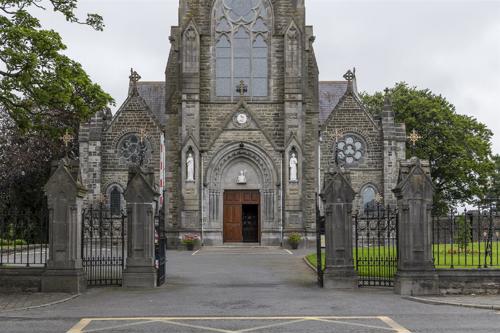
The foundation stone for St. Patrick’s Roman Catholic Church was laid by Dr. Nulty, Bishop of Meath, in 1891. The altars are the work of the Pearse Brothers of Dublin, one of whom was the father of Patrick Pearse, leader of the 1916 Rising. Dedicated in 1902, the gothic style church has some beautiful mosaics. One window illustrates the miraculous statue of ‘Our Lady of Trim’ while another shows St. Patrick preaching on the Hill of Tara.
6: Maudlin's Cemetry

This was the site of the medieval leper hospital of Saint Mary Magdalene, dating from at least the 1300s. All that remains now is a small ruined church. In 1976 a local committee erected a bronze sculpture of ‘Our Lady of Trim’ and today the statue, arms outstretched in
greeting, welcomes all who visit the town.
7: Echo Gate

Just outside the town on the Dublin road is the Echo Gate. Shout across the river to the ruined Victorine Friary and your words are returned in a perfectly clear echo!
8: Priory of St. John the Baptist

This priory was founded in the early 13th century for the Crutched or Crossed Friars of the Order of John the Baptist (who wore crosses on their vestments). Here the friars ran a hospital, providing care and hospitality to the poor, the sick and weary travellers. When the abbey was closed it was used as a private house, and its defensive towers show the turbulent nature of life in Trim, on the edge of the Pale, the area of English rule in Ireland.
9: Tomb of the Jealous Man & Woman

Sir Lucas Dillon (d.1593), a senior administrator in the Elizabethan government in Ireland, and and his wife, Lady Jane Bathe, are buried here in an effigy tomb The tomb is known locally as the tomb of the ‘Jealous Man and Woman’ since its two stone figures do not touch each other, and his Sword of State separates the figures.
The tomb is associated with a cure for warts:- Rub a pin on your wart, place the pin between the couple on the tomb and, as the pin rusts and decays, your wart will disappear.
10: Newtown Cathedral

The medieval cathedral of St. Peter and St. Paul is situated in Newtown Cemetery. It was founded close to the temporal power of Trim Castle by the first Anglo-Norman Bishop of Meath, Simon de Rochfort, in c.1206 after his cathedral at Clonard was burned down.
Only part of the original nave and chancel of this, one of the earliest Gothic churches in Ireland, survive. Part of the ruined Priory of Augustinian Canons (of the Victorine Order), which was established to maintain the cathedral, also survive.
11: Victorine Friary

Next to the cathedral are the buildings of the Victorine Friary, home to the Augustinian Canons who followed the Rule of the Abbey of St. Victor near Paris. The Refectory (dining hall) is situated at the southern end of the cloister. Only the south and west walls remain, along with a small part of the chapter house doorway.
12: Newtown Church

Also set in the Newtown Cemetery, to the east of St. Peter & Paul Cathedral are the ruins of the Newtown Clonbun Parish Church. Not much remains of the walls except for the arched doorway in the eastern gable, the western gabled wall and part of the wall on the southern side. Sir Lucas and Jane Dillon's tomb is located within the church.
13: Navan Gate
On Navangate Street leading from the Newtown Monuments was the Navan Gate, the eastern gate in the town walls. Along the road on the southside a wall plaque commemorates this gate.
14: Athboy Gate
The Athboy Gate was the most northerly entrance to the town. It was sometimes called the Black Gate as it was close to the Dominican Black Friary. Again, no remnants of the gate exist, but a plaque marks the site at the junction between Haggard Street and Kildalkey Road.
15: St. Patrick's Cathedral
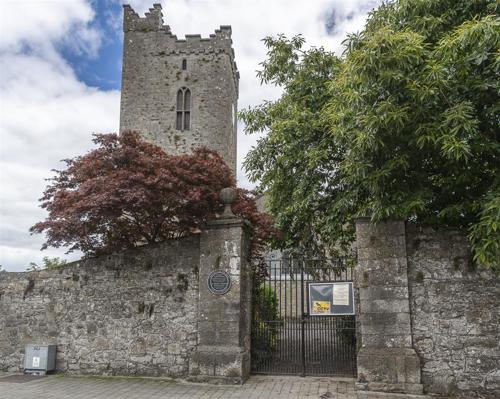
The Cathedral Church of St. Patrick (Church of Ireland) stands on the site of these early foundations of Christian worship in Ireland and is reputed to be older than Armagh or Canterbury Cathedrals. Early medieval burials and the possible ecclesiastical boundary have been discovered in the vicinity of the church, said to be founded by St. Patrick and his nephew St. Loman.
The present church, with the exception of the tower, was built in 1803 on the foundations of the old nave, the chancel being left as a ruin attached to the east end of the church.
16: The Old Gaol
In 1681 the county gaol (jail) was built in Trim, which was the county capital at the time. There were two courtyards - one for debtors and one for felons. Prisoners would have included murderers, highwaymen, common thieves, pickpockets and rebels and those who could not pay their debts. Conditions were harsh and it was very overcrowded. It was decommissioned in 1834 when a new goal was built close to St. Patrick's Catholic Church. The remains of the old gaol can be seen behind two houses on Mill Street, backing onto the river.
17: St. Mary's Abbey
St. Mary's Abbey was established in the 1140s, before the Anglo-Norman conquest, and at some point came under the Augustinian rule. It was an important monastery, located near the fording point of the river.
From 1400- 1444, St Mary’s Abbey became a place of pilgrimage for visitors from near and far who were granted royal protection from King Henry IV. Here they found Our Lady of Trim, a sacred wooden statue that miraculously healed a long list of ailments. During the Reformation in 1538 the statue was publicly burned as the new Protestant church frowned upon the worship of statues.
In 1415, the King’s representative in Ireland, Sir John Talbot, converted part of St Mary’s Abbey into a private residence, and it became known as Talbot’s Castle. His coat of arms can still be seen on the side of the building.
Jonathan Swift, the author of Gulliver’s Travels, bought Talbot’s Castle from his good friend Stella in the 1700s. Swift met Stella in England and after her father died, Swift convinced her to move to Ireland. In his publication, ‘Journal to Stella’, he wrote about a quiet and happy time spent in Trim.
In the late 18th century, Talbot Castle became the Diocesan School of Meath. Arthur Wellesley, the future Duke of Wellington, attended the school. Famous mathematician and astronomer William Rowan Hamilton was also educated here, under his uncle Rev. Mr. Hamilton. It is now a private residence.
18: Yellow Steeple

The belltower of St Mary’s Abbey has overlooked the town of Trim since the late 1360s, built after the burning of the original Abbey. It has earned the name of the Yellow Steeple, due to the rich yellow hue it reflects in the sunlight.
From the top of this 38.5m, seven-storey belltower, the tallest medieval building in Ireland, soldiers could gain a perfect viewpoint of the castle and the surrounding lands, and so the Yellow Steeple became a watchtower, even after the original Abbey had decayed.
But its striking presence made it a target for attack, and it was blasted in half in the 1640s when the Cromwellian forces invaded Trim. Some say the Cromwellian forces themselves destroyed the Yellow Steeple with cannons from across the River Boyne, others say it was ordered to be blown up so the tower could not be seized by opposing troops.
19: Sheep Gate

The Sheep Gate is the only surviving gateway of the medieval town of Trim. In olden times tolls were extracted but today you can pass through it as freely and as often as you
wish. The gate leads out to the Porchfields, a large medieval open field system that survives now as a beautiful parkland for the town.
20: The Cannon

Dating from the Crimean War between 1854- 57, this Russian cannon situated in the Castle grounds was captured by the British forces and gifted to Trim in thanks for the town’s
support for the war. Many Irishmen had served in the British military and similar cannons were sent to other locations in Ireland and all across the British Empire.
Look closely on the top and see the Russian Tzar’s coat of arms, the Romanov double-headed eagle.
21: The Courthouse
The courthouse is located close to the castle and bridge, on the site of a former Franciscan friary. Designed by Richard Morrison in c1810, the monumental size and architectural quality of this courthouse makes it one of the most impressive public buildings in the town.
Did you know?

The old bridge in Trim, located close to the castle and St. Mary's Abbey, dates from 1330-1350. It replaced an earlier bridge, destroyed during sever flooding. Trim's stone bridge is likely to be the oldest unaltered medieval bridge still in use in Ireland.



